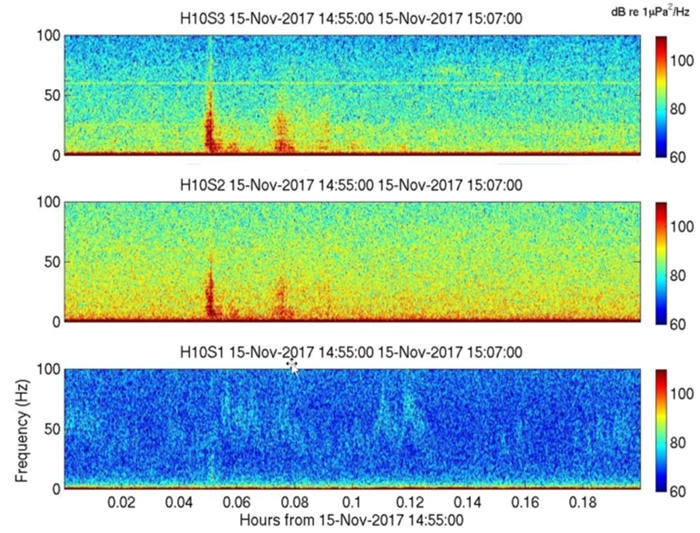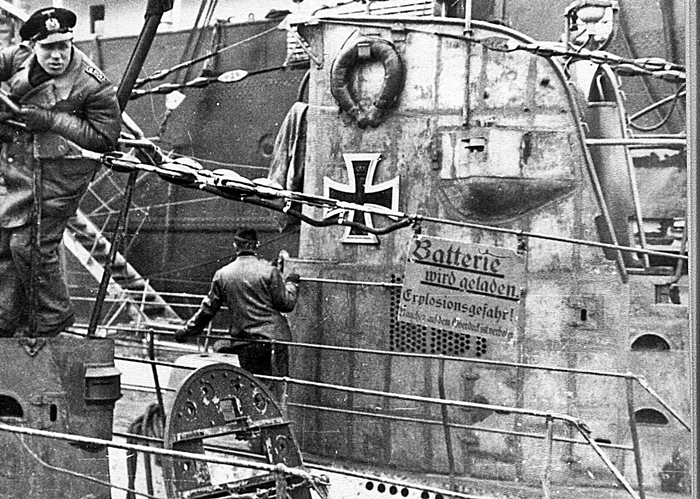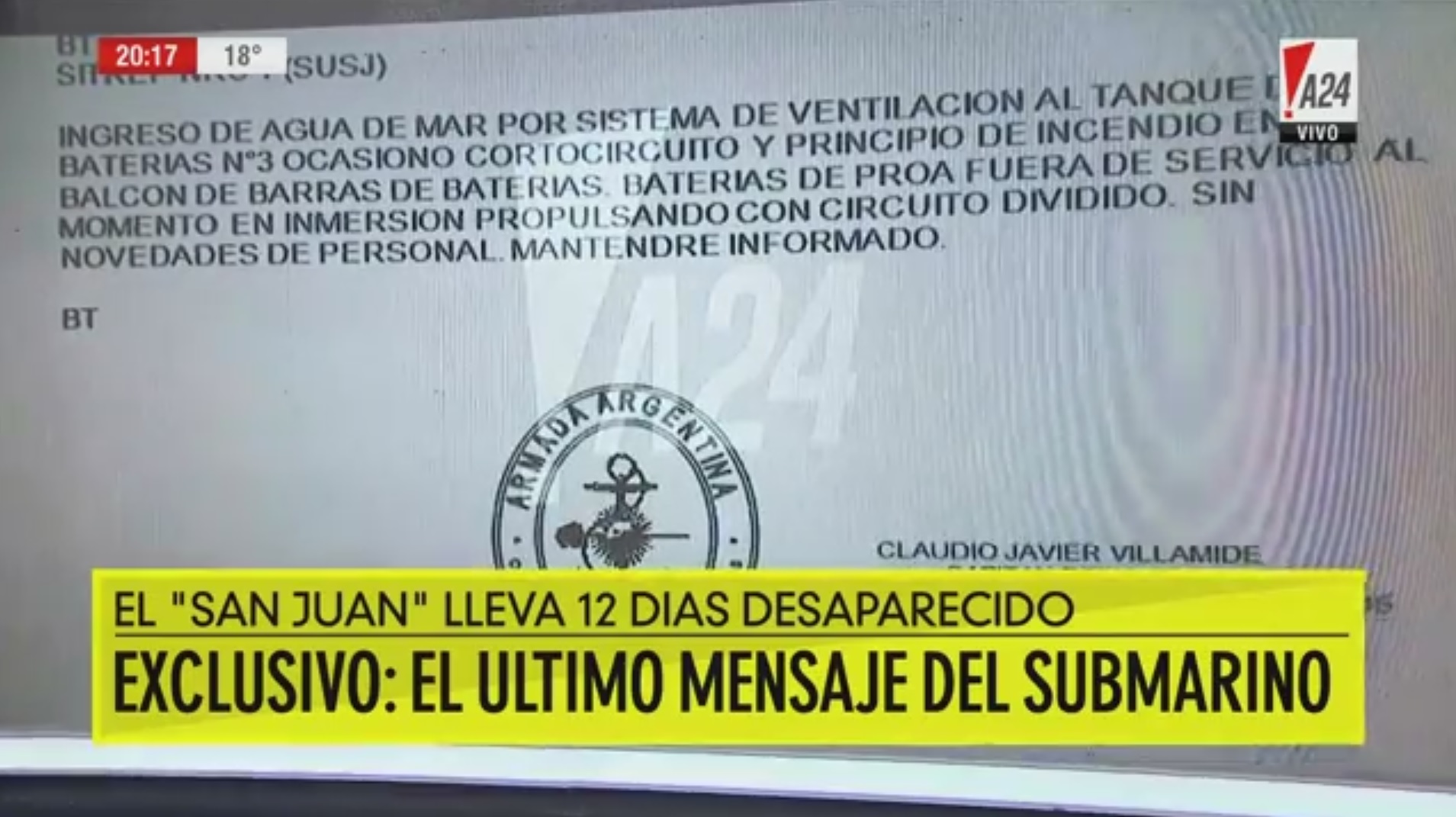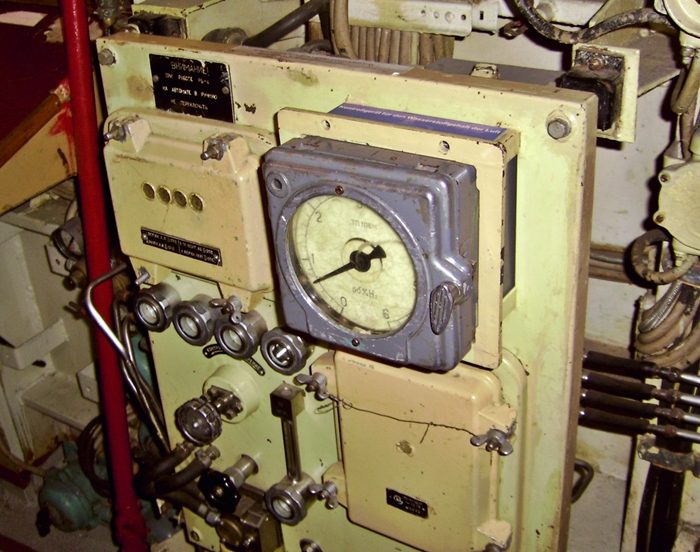February
Possible scenarios of the sinking of the ARA San Juan
On January 10, the private Internet organization Save the Royal Navy published a one-sided analysis of the data published by the CTBTO on November 23, 2017 via Twitter. It is supposed to come from the American Office of Naval Intelligence, for which, however, there is no evidence. According to this analysis, the hydroacoustic anomaly recorded on November 15 actually originated from the San Juan. It was formed at a depth of almost 1275 feet by the sudden collapse of the pressure-hull. The sudden conversion of potential energy (from water pressure) into kinetic energy released an energy equivalent to an explosion of more than 6 t TNT, which destroyed the submarine within 40 ms. Therefore, the crew of the San Juan would not have drowned or suffered in any way. A period of 40 ms would simply be too short to be consciously perceived by humans. The remains of the San Juan then sank to the bottom of the sea at a speed between 10 and 13 kn.
Analysis of Acoustic Detection of the loss of the Argentine Submarine #ARASanJuan by US Office of Naval Intelligence pic.twitter.com/UCHjR8jQae
— NavyLookout (@NavyLookout) 10. Januar 2018
The conclusions drawn at ONI from the analysis of the data of the hydroacoustic anomaly of November 15 appear plausible at the U-boat Archive only with regard to the final result – an almost pulverized and thus simply undetectable San Juan. What exactly happened on board the submarine will probably never come to light, but according to our analyses a different scenario turns out to be much more probable. Like the ONI scenario, it assumes that the hydroacoustic anomaly originated from the San Juan and leads to the same result, but also includes its last radio message and the history of underwater operations.
The Hydroacoustic Anomaly
If the signal came from the San Juan, its records are historically the only primary source of the submarine’s disappearance. As such, it should be subjected to a source criticism that will be strongly influenced by acoustics.
The CBTO provided a diagram of the event when it announced on 23 November 2017 that the anomaly had been detected. It apparently represents the data of three different hydrophone nodes of the monitoring station H10 on Ascension. The abscissa of this extended Cartesian system represents the time axis, as so often in physics. It covers a total period of 12 minutes and is divided into 10 sub-steps of 0.2 hours = 72 seconds. The frequency is displayed in Hertz on the ordinate. A specific sound pressure level is assigned to each point within this representation via a colour scale. The diagram thus allows the two-dimensional statistical distribution of certain sound pressure levels to be displayed. It is therefore not a display of the waveform that is usually used for the graphical representation of sound events. In this simple, two-dimensional form of the Cartesian system, the abscissa also represents the time axis, while the ordinate represents the sound pressure level. Only on the basis of such a diagram, which corresponds quasi to human hearing, one could draw conclusions about the closer nature of a sound event and thus its possible cause. Moreover, this would only be possible if the time axis had a much higher resolution.
The diagram shows several sound events. The first sound event is followed by reflections at the bottom of the sea. It is therefore only necessary to look at the first event. It is a spontaneous, relatively short broadband signal in ranging up to 50 Hz. This frequency is probably familiar to most readers by the mains hum sometimes heard on their sound systems while sounds below 20 Hz cannot be heard by humans. Without comparative values, it is hardly possible to deduce conclusions from the data of the respective sound pressures, since they are given in the relative, logarithmic auxiliary unit of measurement dB, whose reference value p0=1 μPa is different from the general reference value for sound in the air at p0=20 μPa. However, values of well over 100 dB generally indicate a relatively loud sound event. Further statements, for example about the exact nature and thus the possible cause of the sound event, cannot be made solely on the basis of the diagram or the data. If one does it nevertheless, like a resourceful Youtuber or the American ONI, this would be – formulated for illustration – as if you were to describe a very, very loud bang in more detail. Without hearing protection, it blows your ears off. Not with hearing protection, but you could no longer perceive finer differences in sound pressure level, so that you could only state that the bang was very loud. Another analogy would be to go to determine the color of a particularly intense flash. You would go blind with the naked eye, but with protective welding glasses the perception of colour is severely limited.

Characterization as an explosion and approximate localization of the place of origin were only possible for the CTBTO with the help of data from another of its monitoring stations, the HA04 station on the Crozet Islands. The stations have several hydrophone nodes distributed over a longer distance in the sea. By measuring the transit time differences between the individual hydrophone nodes of a station, it was possible to determine the direction from which the sound came. This made it possible to determine the original location and thus also the time of the sound event by cross-directioning the two stations HA10 and HA04. Since the distances between the place of origin and the stations were now known, the approximate magnitude of the sound event could be determined on the basis of the sound pressure measured in the stations using computational models available at the CTBTO to determine the approximate strength of possible nuclear tests. The undoubted conclusion was that the sound event must have been a major explosion.
Conclusion:
The CTBTO data only suggest that at the time and place of the disappearance of the San Juan there was a stronger explosion, but nothing more. Anyone who carries out further analysis there is ultimately only reading tea leaves.
Why did the San Juan explode so suddenly?
Most likely due to a battery explosion. The San Juan was a conventional, diesel-electric submarine that stored the energy for its electric motor in 960 battery cells. Hydrogen can already be released during charging by electrolytic decomposition of the battery acid and may accumulate in the air of the submarine to form highly explosive oxyhydrogen gas. But also especially in the event of a short circuit on the batteries, as reported by the San Juan in their last radio message, considerable amounts of hydrogen could evaporate.

According to this last radio message, the short circuit on the San Juan was caused by seawater that had entered the forward battery block via the snorkel and the ventilation system of the batteries. This can be regarded as a malfunction of this system, since on a submarine it is always essential to ensure that no seawater gets to the batteries. Firstly because of the risk of a short circuit, and secondly because the battery acid could react with salt water to form toxic chlorine gas.

The short circuit on the San Juan caused a smouldering fire that the crew could quickly extinguish. The forward battery block was removed from the grid and the underwater cruise continued only with the aft one. Judging by the last radio transmission, the commander of the San Juan apparently believed he had the situation under control, but in fact the front batteries probably released even more hydrogen, which could accumulate to oxyhydrogen due to the malfunction in the ventilation system in the boat. Where seawater can penetrate, hydrogen can all escape. Since hydrogen is completely colourless and odourless, this probably happened completely unnoticed by the crew. In places with critical hydrogen concentrations, even the slightest spark, such as when an electric switch was placed, would have been enough to trigger a devastating explosion of the magnitude recorded by the CTBTO on November 15. If there were any live torpedoes on board, their explosives were probably detonated as well.

So the San Juan was probably almost pulverized by an oxyhydrogen gas explosion. No more of it should be left than deformed steel fragments distributed over the seabed, which could no longer be identified as submarine wrecks even on the highest resolution sonar. Its crew probably literally evaporated on the spot, just like seven INS Sindhurakshak crew members during the August 2013 explosion we heard about in the last issue of our flotsam.
For the relatives of the San Juan crew, knowing that their loved ones were unlikely to suffer before their deaths may only be a small consolation. They are left with the uncertainty of where and how exactly their relatives died on the San Juan. As long as their mortal remains are not recovered, there are no real graves to mourn, only the wide sea, which does not carry tombstones. This can make grief and the coping of personal loss more difficult. The relatives of the San Juan crew, however, share their fate with numerous families around the world, of which members have remained on a submarine at sea. To alleviate their suffering, Horst Bredow created the U-boat Archive. By passing on information, he wanted to ease the grief of the relatives of the crew members of U 288, the U-boat on which he sailed, and preserve the memory of the U-boat crew. Over the years of its existence, the U-boat Archive, and later the German U-boat Museum, became a unique memorial for submariners of all nations and times whose wet graves are not decorated with flowers or gravestones. Even if there is nothing else we can do for the families of the San Juan crew, we will always honour the men and the woman of the submarine in the German U-boat Museum. Eliana María Krawczyk is the first female officer ever to be killed in action on a submarine.
Battery accidents on submarines
To illustrate the risk of an oxyhydrogen gas explosion on board a submarine, here is a selection of some submarines on which serious incidents have occurred in connection with the batteries. This list does not claim to be exhaustive and does not take chlorine gas development due to contact of battery acid with seawater into account.
Kriegsmarine:
U 2507 (1944) – A severe battery explosion at the end of the training made a shipyard stay of several weeks necessary
Federal German Navy:
U 7 (1965) – A battery explosion damaged the submarine so severely that it had to be temporarily decomissioned https://en.wikipedia.org/wiki/Type_205_submarine
International:
French Diane (1918) https://en.wikipedia.org/wiki/French_submarine_Diane
French Eurydice (1970) https://en.wikipedia.org/wiki/French_submarine_Eurydice_(S644) – All that was left of this boat was an oil slick, a few pieces of wreckage and the records of a seismological measuring station
French Minerve (1968) https://en.wikipedia.org/wiki/French_submarine_Minerve_(S647)
Indian INS Sindhurakshak (2013) https://en.wikipedia.org/wiki/INS_Sindhurakshak_(S63)
Pakistanisch PNS Ghazi (1971) https://en.wikipedia.org/wiki/PNS_Ghazi
HMS A1 (1911) https://en.wikipedia.org/wiki/HMS_A1
HMS A4 (1905) https://en.wikipedia.org/wiki/HMS_A4
HMS Auriga (1970) https://en.wikipedia.org/wiki/HMS_Auriga_(P419) – severe battery explosion on 11 February 1970, 6 injured
USS E-2 (1916) https://en.wikipedia.org/wiki/USS_E-2_(SS-25)
USS Cochino (1949) https://en.wikipedia.org/wiki/USS_Cochino_(SS-345)
USS Pomodon (1955) https://en.wikipedia.org/wiki/USS_Pomodon_(SS-486)
USS Scorpion (1968) https://en.wikipedia.org/wiki/USS_Scorpion_(SSN-589)
Sowj. B-37 (1962) https://en.wikipedia.org/wiki/Soviet_submarine_B-37
Sowj. K-129 (1968) https://en.wikipedia.org/wiki/Soviet_submarine_K-129_(1960)
